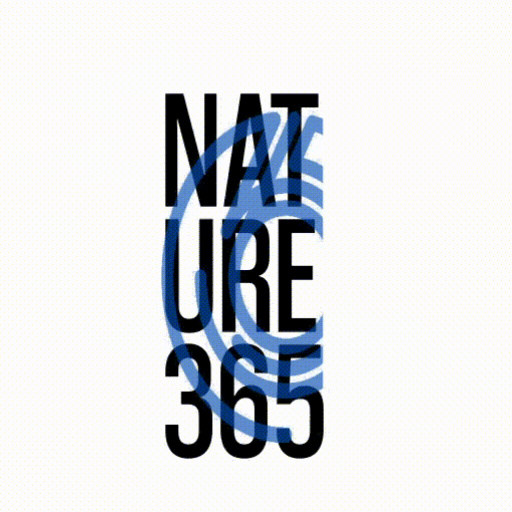- A recent assessment from the National Research Council indicates that glaciers in the eastern and central Himalayas seem to be receding at accelerated rates, comparable to those in other parts of the globe. In contrast, glaciers in the western Himalayas are more stable and may expand.
This paper investigates how changes to glaciers in the Hindu Kush-Himalayan region, which spans eight Asian nations, might impact the region’s river systems, water resources, and population in South Asia. The region’s mountains are the source of numerous major river systems, including the Ganges, Mekong, Yangtze, and Yellow rivers, which provide around 1.5 billion people with drinking water and agricultural water.
The report’s authoring committee said that the Himalayan climate is changing, but it is uncertain how climate change will affect particular locations. The eastern Himalayas and Tibetan Plateau are warming, with the tendency becoming more dramatic at greater altitudes. Models imply that desert dust and black carbon, a component of soot, might contribute to the fast warming of the atmosphere, the hastened melting of snowpack, and the retreat of glaciers.
While glacier melt delivers water to the region’s rivers and streams, melting glaciers over the next few decades are not expected to significantly impact water supply at lower altitudes, which depends mainly on monsoon precipitation and snowmelt, according to the committee. Large-scale extraction of groundwater resources, population increase, and changes in water-use patterns are more likely to cause variations in water supply in these regions. If the current pace of retreat continues, however, high elevation regions may have affected the seasonal and temporal water flow in several river basins. During the dry season, especially in the west, where glacial melt has a more significant impact on river systems, the effects of glacier retreat would become more apparent. However, changes in the location, intensity, and unpredictability of rain and snow are expected to influence regional water supply more than glacier retreats.

The committee emphasized that melting glacier ice might play a crucial role in sustaining water security during droughts and other climatic extremes. During the European lack of 2003, glacier melt contributions to the Danube River in August were almost three times more than the previous century’s average. Water preserved as glacier ice might act as hydrologic “insurance” for the Himalayan area, supplementing streams and rivers when they are most required. While receding glaciers will provide more meltwater in the near term, the loss of glacial “insurance” might be problematic in the long run.
The committee determined that water resources management and the supply of clean water and sanitation are already a concern in the area and that changes in climate and water availability need small-scale adjustments with effective, adaptable management. Current initiatives concentrating on natural hazards and disaster reduction in the area might provide valuable insights for analyzing and addressing the possible implications of glacier retreat and changes in snowmelt processes in the region.
The committee found several basins in the area are “water-stressed” due to socioeconomic changes and natural causes. This stress is expected to exacerbate with the substantial anticipated population expansion. Future climate change might compound this strain.
Even though the history of international river conflicts implies that collaboration is more probable than violent confrontation in this area, societal circumstances might alter. Consequently, alterations in water supplies may play an increasing role in political conflicts, particularly if current water management institutions do not change to better account for the region’s social, economic, and ecological intricacies, as stated by the committee.
Why are they important?
Glaciers: so why are glaciers significant? In fact, they play a crucial part in the world’s water systems, contributing to a variety of life-sustaining substances.
Provide drinking water.
The melting of glaciers gives potable water to people in numerous parts of the globe, including the Himalayas. 75% of the world’s freshwater is contained inside glacier ice.
Water the crops.
Throughout history, melting glaciers have been utilized to irrigate crops and provide energy for agriculture. In this manner, communities continue to depend on glacier melt until now.
Generate electricity.
It is feasible to utilize glacier meltwater for hydroelectric power dams and generate energy for the region.
Glaciers have repercussions beyond their local vicinity. In the Himalayas, glaciers are the source of the Indus, Ganges, and Brahmaputra rivers. These rivers provide countless millions of people with water.
The Himalayan glaciers
Antarctica and the Arctic have more ice than any other continent. The Himalayas have the third-largest ice and snow accumulation on the planet. These glaciers feed some of the planet’s most significant river systems, directly and indirectly providing billions of people with water, electricity, and earnings.
The Himalayan glaciers are vital to life in the eight neighboring nations and beyond. However, recent research indicates that the Himalayan glaciers are melting at an alarming pace. The effects of this melting might be catastrophic.
Why are the Himalayan glaciers melting?
The Himalayas in India and beyond have received considerable interest in recent years. Recent investigations have shown that the situation may be worse than anticipated. Specifically, one research revealed that if CO2 emissions are not dramatically reduced, two-thirds of the glaciers in the Hindu Kush-Himalaya (HKH) area might vanish.
Between 2000 and 2016, glaciers in the Himalayas lost treble the quantity of ice that they lost between 1975 and 2000. Carbon dioxide and other greenhouse gas emissions are responsible for rising global temperatures.
In addition, air pollution from filthy energy sources contributes. On the ice, the polluted air accumulates black carbon dust. This dust causes glaciers to absorb more heat and swiftly melt.
You may read more about tracking glacial change in our open step and take our online course on climate change and society.
The impacts of melting Himalayan glaciers
Concerns exist about the possible consequences of the melting glaciers in the Himalayas and beyond. Here are a few of the severe repercussions of glacier decline on neighboring regions:
Enhanced flooding.
Proglacial glacial lakes arise when additional meltwater enters the water system. However, these lakes are often unstable, and dam failures may result in devastating glacier lake outburst floods (GLOFs). Similarly, increased water levels in rivers fed by glaciers enhance the danger of floods.
More severe weather conditions.
More water and a warming planet increase the likelihood of severe weather. For instance, scientists have already begun to see temperature and precipitation extremes changes.
Variations in the monsoon.
The monsoon supports the livelihoods of millions of people across Asia. The yearly precipitation is essential for agriculture and water supply. As the effects of global warming alter monsoon patterns, the likelihood of flooding during this season rises.
We have reduced agricultural production.
Snow and glaciers will melt sooner due to global warming, resulting from springing flooding. However, when crops need more water, water quantities fall during the summer. Consequently, agricultural yields decrease, dry zones expand, and fisheries are impacted in the area.
Alterations in energy production
Further downstream, the amount of water in dams may influence hydroelectricity generation.
Ultimately, the melting Himalayan glaciers might threaten the way of life of countless millions. The dangers seem to be very real, whether it is altering weather patterns, major floods, alterations in food and energy production, or unpredictability in water supplies.
How can we improve the situation?
Therefore, the present and future threats posed by melting glaciers are apparent. However, what can we do to better the circumstance? There are several climate change options, the majority of them involve minimizing your carbon footprint. In truth, preventing more significant global warming is the only viable approach.
Individuals may take measures to cut emissions, but governments and businesses must make substantial changes to their policies and practices. Much work must be done to ameliorate the situation as we stand on the verge of a climate disaster.
Final thoughts
Not only are the Himalayan glaciers vital to the surrounding areas, but they also touch the lives of billions of people. These glaciers are melting at an unprecedented pace due to recent global warming and climate change, and the consequences are severe.
- About the Author
- Latest Posts
A passionate advocate for all natural and sustainable ideas. With a background in sustainable economics science and a deep love for nature, Sojy has dedicated his career to promoting eco-friendly practices and encouraging others to live a more sustainable lifestyle. He is an avid hiker, gardener, and cook, and loves experimenting with natural ingredients in his recipes and lifestyle routines. Sojy believes that small changes can make a big impact and is constantly seeking out new ways to reduce his carbon footprint and inspire others to do the same



